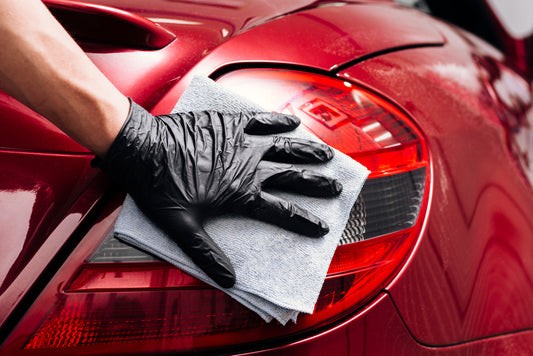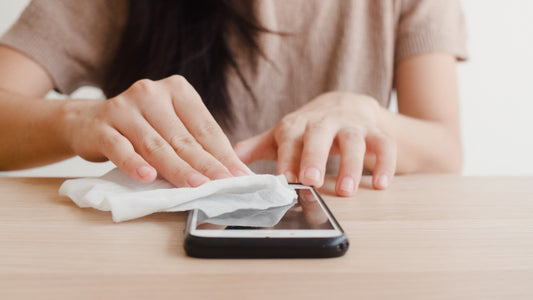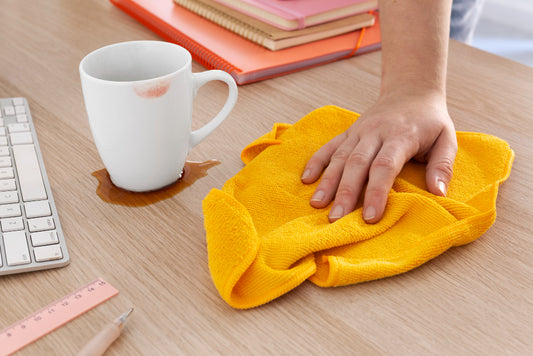When it comes to keeping our homes spotless, our trusty cleaning mop plays a crucial role. However, like any hardworking tool, mops require some TLC to ensure they continue to deliver top-notch cleaning performance. In this guide, we'll explore valuable maintenance tips to help you extend the lifespan of your cleaning companion, ensuring it remains an effective ally in your battle against dirt and grime.
Tip 1: Choose the Right Mop for the Job
Before diving into maintenance tips, it's essential to select the right mop for your specific cleaning needs. Different mop types are designed for various surfaces and purposes. Whether it's a microfiber mop for versatile cleaning or a string mop for larger areas, choosing the right tool from the start sets the stage for effective maintenance.
Tip 2: Clean Mop Heads Regularly
One of the most critical maintenance steps is to clean your mop heads regularly. After each use, rinse the mop thoroughly to remove any lingering dirt, debris, or cleaning solutions. If your mop head is machine-washable, toss it in the laundry according to the manufacturer's instructions.
Tip 3: Disinfect and Deodorize
To keep your mop smelling fresh and free from bacteria, periodically disinfect and deodorize it. Soak the mop head in a solution of water and a mild disinfectant or white vinegar. This not only removes odors but also helps eliminate any germs that may have accumulated during use.
Tip 4: Allow Mop Heads to Air Dry
After cleaning or washing the mop heads, ensure they are thoroughly air-dried before storing them. Hanging them in a well-ventilated area prevents the growth of mold and mildew, preserving the integrity of the mop fibers.
Tip 5: Rotate Mop Heads
If your mop comes with multiple heads or refills, consider rotating them during cleaning sessions. This practice helps distribute wear and tear evenly among the mop heads, extending the overall lifespan of your cleaning tool.
Tip 6: Avoid Excessive Moisture
While it's crucial to have a damp mop for effective cleaning, excessive moisture can lead to unpleasant consequences. Overly wet mop heads not only compromise cleaning efficiency but can also damage certain types of flooring. Wring out your mop thoroughly before use to strike the right balance.
Tip 7: Check and Tighten Components
Regularly inspect your mop for any loose or damaged components. Tighten screws, nuts, or bolts if needed. Addressing these minor issues promptly prevents them from escalating into more significant problems that could affect the overall functionality of your mop.
Tip 8: Store Mops Properly
How you store your mop when it's not in use matters. Hanging your mop in an upright position allows it to air out and prevents the mop head from resting on the floor. Proper storage not only aids in maintaining the mop's effectiveness but also prevents the growth of bacteria in damp conditions.
Tip 9: Replace Mop Heads When Necessary
Despite your best efforts, mop heads have a finite lifespan. When you notice signs of wear, such as fraying or a significant decrease in cleaning performance, it's time to replace the mop head. Using a worn-out mop not only compromises cleanliness but can also potentially damage your floors.
Tip 10: Follow Manufacturer Guidelines
Every mop comes with specific care instructions provided by the manufacturer. Following these guidelines ensures that you're taking the right steps to maintain your mop properly. From washing instructions to storage recommendations, adhering to these guidelines is key to maximizing your mop's longevity.
Your cleaning mop is an invaluable tool in your household, and proper maintenance ensures it remains a reliable and efficient ally in your cleaning routine. By incorporating these maintenance tips into your regular cleaning habits, you not only extend the lifespan of your mop but also enhance its cleaning performance. Remember, a well-maintained mop not only keeps your floors sparkling but also contributes to a healthier and more hygienic home.




